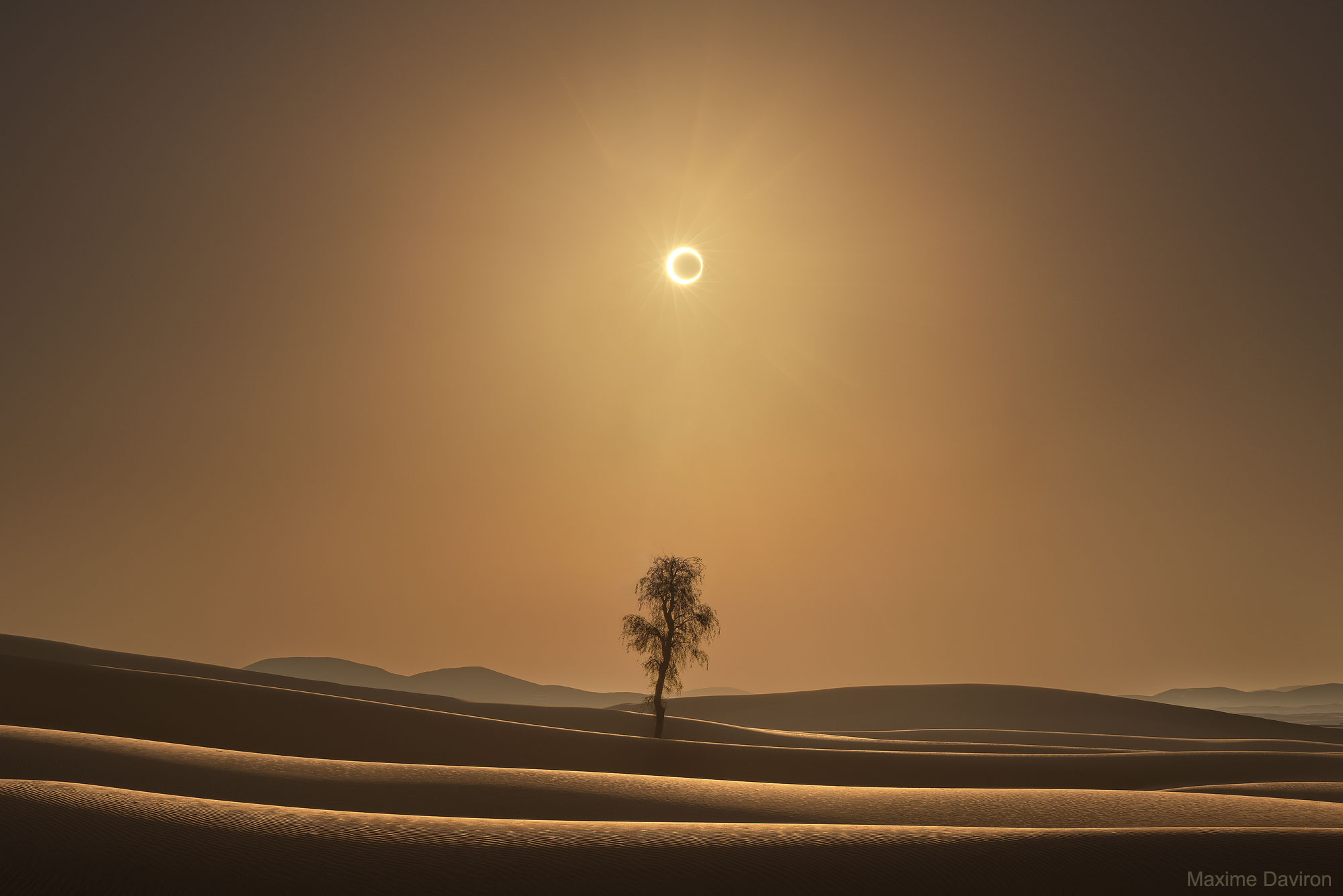沙漠日食
2020 January 13
A Desert Eclipse
Image Credit & Copyright: Maxime Daviron
Explanation: A good place to see a ring-of-fire eclipse, it seemed, would be from a desert. In a desert, there should be relatively few obscuring clouds and trees. Therefore late last December a group of photographers traveled to the United Arab Emirates and Rub al-Khali, the largest continuous sand desert in world, to capture clear images of an unusual eclipse that would be passing over. A ring-of-fire eclipse is an annular eclipse that occurs when the Moon is far enough away on its elliptical orbit around the Earth so that it appears too small, angularly, to cover the entire Sun. At the maximum of an annular eclipse, the edges of the Sun can be seen all around the edges of the Moon, so that the Moon appears to be a dark spot that covers most — but not all — of the Sun. This particular eclipse, they knew, would peak soon after sunrise. After seeking out such a dry and barren place, it turned out that some of the most interesting eclipse images actually included a tree in the foreground, because, in addition to the sand dunes, the tree gave the surreal background a contrasting sense of normalcy, scale, and texture.
沙漠日食
影像来源及版权:Maxime Daviron
说明: 沙漠,是观赏金环食的绝佳地点,那里受到树木和云层遮挡的可能很低。去年12月下旬, 一队摄影师来到阿拉伯联合酋长国, 前往世界最大的连片沙漠Rub al-Khali, 去拍摄一次特殊的日食。金环食是指在月亮处于绕地球的椭圆轨道上较远的位置时,视圆面较小,无法遮住整个太阳的情况下所发生的日环食。日环食食甚时, 在月亮边缘的外侧可以看到一整圈太阳的边缘,这时月亮像是一个黑盘,挡住了绝大部分——但并非全部——的太阳。摄影师们知道,这次的日食奇景将在日出后不久发生。在这样一个干旱荒凉之地所拍摄的别有趣味的日食照片里,反常出现在前景中的这棵树与梦幻般的背景沙丘在尺度和纹理上形成了反差。

